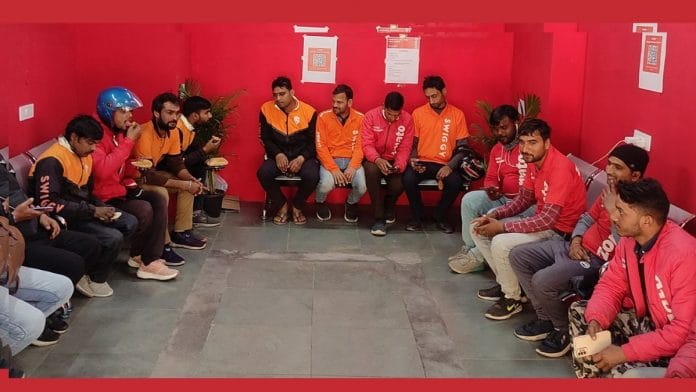New Delhi: The Modi government is planning a new scheme for alleviation of urban poverty under which it will identify and reach out to vulnerable occupation groups such as gig workers, construction workers, domestic helps, among others, ThePrint has learnt.
From financial assistance to mapping the socio-economic profile of urban poor and planning focused interventions, the government looks to adopt a new approach that will see occupation-specific interventions for vulnerable groups, according to senior officials with the Ministry of Housing and Urban Affairs (MoHUA).
This comes after the success of PM Street Vendor’s AtmaNirbhar Nidhi (PM SVANidhi) scheme, which was launched in 2020 to help street vendors with loans for restarting their work after the Covid pandemic.
The new scheme, which is likely to be launched soon, will be modeled on the PM SVANidhi scheme, according to senior ministry officials. The plan is to have provision for sector- or occupation-specific interventions, the sources said.
Currently, the Centre runs the Deendayal Antyodaya Yojana-National Urban Livelihood Mission (DAY-NULM), which was launched in 2013, to reduce the poverty and vulnerability of urban poor households on a sustainable basis.
Its primary focus is on creating self-help groups (SHGs), providing skill development, self-employment training, and developing shelters for the homeless. While the DAY-NULM will end this month, sources say, it might be extended for a few months.
The NULM is modeled on the National Rural Livelihood Mission (NRLM), to help urban poor improve their livelihood sources through formation of Self Help Groups (SHG), mostly of women.
“A need was felt to relook at the approach, as the challenges in urban areas are very different from rural areas. In rural areas, people are mostly involved in farm-based activities, whereas in urban areas, the focus is more on service industry and manufacturing. After the success of PM-SVANidhi, it was felt that we need more such focused interventions by identifying different vulnerable groups,” a senior ministry official told ThePrint.
While the details of the new scheme are yet to be finalised, the plan is to identify different vulnerable groups and then chart out focused interventions based on the occupations, said a ministry source.
Some of the vulnerable groups in cities include construction workers, people involved in transport services, gig workers, domestic helps, waste pickers, auto and electric rickshaw drivers.
“One scheme or set of interventions might not work for all groups. We also plan to do socio-economic profiling of the urban poor, just like we did for street vendors, and help them avail the benefits of various central government schemes. There is also a plan for convergence with the e-Shram portal so that we can get the exact number of vulnerable groups in cities,” another official said.
ThePrint reached out to the ministry for a comment. This report will be updated if and when a response is received.
Last year, the MoHUA held a consultation with stakeholders and non-profit organisations to explore the possibility of reimagining the urban livelihood mission to widen its ambit, and also to overcome the challenges faced by states and Union Territories in its implementation.
According to senior officials, the PM-SVANidhi scheme has become a model for reaching out to a large section of urban poor.
PM-SVANidhi-like intervention need for other sectors
The PM-SVANidhi scheme, which ends in December, the officials said, has been a game changer, as it has helped lakhs of street vendors to restart and also to scale up their businesses.
Under the scheme, street vendors were given loans in three tranches (Rs 10,000, Rs 20,000, Rs 50,000) to restart businesses. According to the scheme’s dashboard, over 65.4 lakh street vendors have availed the loan in the past four years.
Apart from the loan, the ministry also carried out the mapping of socio-economic profile of the families of street vendors and helped them avail the benefits of various central government schemes under the ‘SVANidhi se Samriddhi’ programme for their “holistic development and socio-economic upliftment”.
According to the information available on the dashboard, close to 37.93 lakh street vendors (PM-SVANidhi beneficiaries) and close to 80.77 lakh family members have been profiled.
“The plan is to have a similar system in place for other sectors or occupational groups,” said an official.
(Edited by Tony Rai)
Also Read: To curb spiralling air pollution, three Indian Tier-2 cities to take a leaf out of London’s playbook






